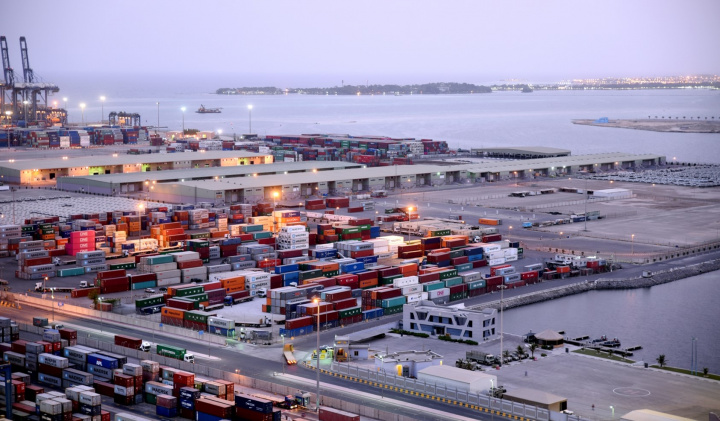‘No two trades are alike’.
This phrase has always been true of ocean container shipping, but the reconfiguration of global supply chain networks in the wake of conflict in the Red Sea and unrest in the wider Middle East means it is important to take a fresh look at the way different trades interact and compare.
Exports of refrigerated cargoes out of Europe is one such example where previously held views on the way these trades behave must be reassessed as new sailing routes impact freight rates and container movements.
This latest Xeneta update will demonstrate these shifting market dynamics by focusing on the two reefer trades from North Europe to the Persian Gulf and North Europe to Southeast Asia.
Europe exports of refrigerated cargo is big business with the significant proportion of containers transported on long term shipping contracts.
North Europe to the Persian Gulf
Since the end of 2023, Xeneta’s long-term contract market average for a 40ft Reefer High Cube (RH) on the trade from North Europe to the Persian Gulf (and Gulf of Oman) has increased 58% to stand at USD 3570 on 19 September.
Note: this data is based on long-term rates signed within the past three months rather than all valid contracts in the market. This measure provides insight into the long-term rates being offered at that particular point in time.
Freight rates on this trade jumped USD 950 per RH right at the start of 2024 as the market faced the reality of 90% of transits through the Bab el-Mandeb Strait no longer happening.
Most container lines changed the normal sailing route between North Europe and the Far East by turning away from the Persian Gulf and Gulf of Oman and heading south towards the Cape of Good Hope as soon as ships had passed the northern tip of Sumatra on the fronthaul.
The same route was taken on the return journey as carriers needed the ships back in the Far East as soon as possible to limit the impact of extended transit times on weekly schedules.
As with almost all efforts to mitigate the impact of the Red Sea conflict – there are unintended consequences to the best of intentions. By changing this sailing route, the ships missed numerous port calls in the Persian Gulf and Gulf of Oman which would have ordinarily been used to deliver reefer cargoes on the backhaul voyage en route from North Europe to the Far East.
When capacity is cut and services adjusted it is almost inevitable that freight rise – and that is exactly what happened on the reefer trade from North Europe to the Persian Gulf, with average long-term rates increasing by USD 300 from early January to the current rate of USD 3570 per RH.
North Europe to Southeast Asia comparison
At the end of 2023 there was just USD 64 difference in the long-term reefer rates on the trades from North Europe to the Persian Gulf and North Europe to Southeast Asia.
By 19 September, the spread between these trades had increased to an eyebrow-raising USD 959 per RH.
This serves as a good example how the Red Sea crisis has severed the relationship between two seemingly similar trades and set them on entirely new market trajectories.
While the re-routing due to the Red Sea conflict caused massive disruption into the Persian Gulf due to missed port calls, there was no such impact on the trade to Southeast Asia.
After the initial jump in January 2024, long-term contract rates from North Europe to Southeast Asia set into a ‘new normal’ and have mostly been moving sideways ever since. The market high-low range on this trade in 2024 is between USD 2 250 and USD 3 000, and currently sits a meagre USD 161 per RH lower on 19 September compared to 1 January.
Ocean network changes impact demand
The demand profile between these trades has also been changed by the reconfiguration of ocean supply chains in 2024.
The reefer trade from North Europe to Middle East is 40% bigger in terms of volume than the trade from North Europe to Southeast Asia. However, the number of reefers moved into Middle East grew by 2.5% year-on-year in the first seven months of 2024.
Meanwhile, volumes on the trade to Southeast Asia is up 6.8% in the same period. Moreover, demand for reefer movements into Southeast Asia from North Europe has been higher year-on-year in every month of 2024 so far with the exception of June.
Whether this is due to reefer goods being priced out of the market or a lack of port options for reefer shippers is difficult to say, but the impact on demand is clear.
The behavior highlighted on the two trades highlighted in this update should also be seen in the context of global demand for reefer container transport, which is at an all-time high.
In the first seven months of 2024, reefer demand is up 5.1% compared to 2023. In addition, there has been a monthly record set in every month with the exception of April (which only narrowly missed setting the highest ever total for that month).






